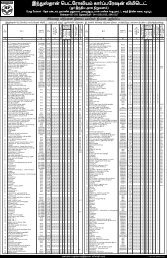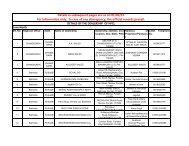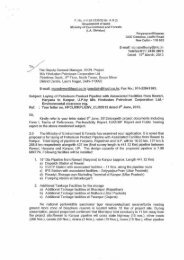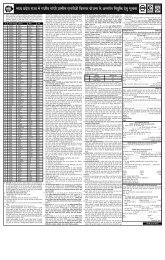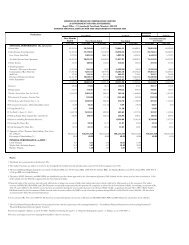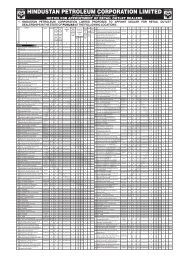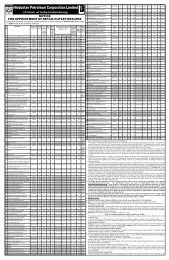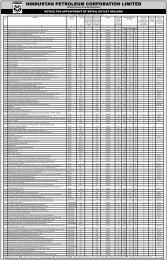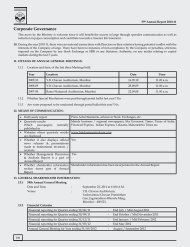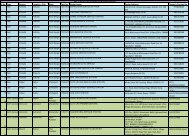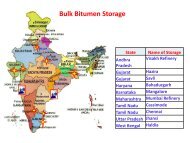HP Bitumen Handbook - Hindustan Petroleum Corporation Limited
HP Bitumen Handbook - Hindustan Petroleum Corporation Limited
HP Bitumen Handbook - Hindustan Petroleum Corporation Limited
Create successful ePaper yourself
Turn your PDF publications into a flip-book with our unique Google optimized e-Paper software.
Appendix-I : road metals and<br />
materials<br />
LATERITE - A name derived from the Latin word for brick earth and applied to<br />
the red residual soils or surface products that have originated in site from the<br />
atmospheric weathering of rocks. Especially found in the tropics. In many cases<br />
laterite is disintegrated granite which has become restablised by oxidation of<br />
contained minerals within the original stone such as iron, aluminum, etc. Laterite<br />
is quite often red in colour and extensively used in road construction in India.<br />
LEAN - Containing a deficiency of bituminous material or conversely containing<br />
excess of aggregate.<br />
LEVELING COURSE - A course placed for the purpose of shaping old surfaces<br />
to proper cross section to receive a subsequent surface course.<br />
LIMESTONE - Any natural rock of sedimentary origin composed principally of<br />
calcium carbonate or of calcium and magnesium carbonates in either its original<br />
chemical of fragmental or crystallised form.<br />
MARSHALL TEST : The Marshall test consists of the manufacture of cylindrical<br />
specimens 102 mm in diametre & 64 mm high by using a standard compaction<br />
hammer and a cylindrical mould. The specimens are tested for their resistance<br />
to deformation at 60 0 C at a constant rate of 50mm/min.in a testing rig. The top<br />
and bottom of the specimen remain unconfined. The maximum load before<br />
failure is called Marshall Stability and the amount of deformation of the specimen<br />
before failure is known as Marshall Flow. The ratio of stability to flow is called<br />
Marshall Quotient and is an indicator of the materials resistance to permanent<br />
deformation.<br />
MASONRY - Masonry in its widest sense, includes all construction of stone or<br />
similar material, in which the separate pieces are either placed together with or<br />
without cementing material to join them; or encased in a matrix of firmly<br />
cementing material. In usual practice, the word “Masonry” is qualified by some<br />
proper term to more particularly describe the masonry under consideration, such<br />
as, stone, concrete, brick, wet, dry, coarsed, uncoarsed, ashler etc.<br />
35



